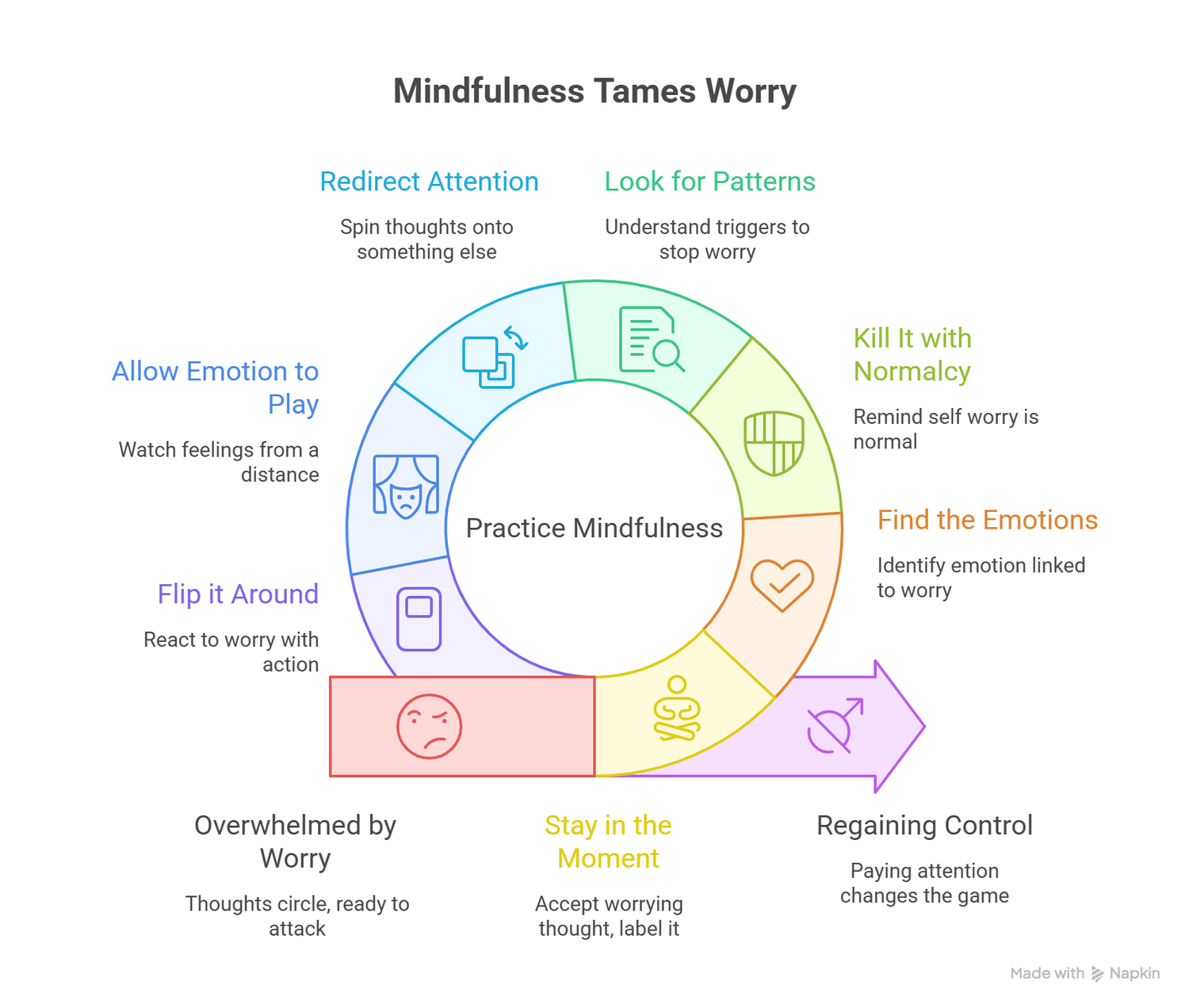
Mindset Tips for Female Entrepreneurs: How to Attack Worry
The Vultures of Worry
One moment you’re fine, and the next, you’re frozen. You don't know what to do or where to go. Your thoughts circle like vultures, ready to attack. It feels like only a matter of time before they get you.
Worry has a sneaky way of derailing everything. But here’s the good news: mindfulness is a quick, easy way to get things back on track. It’s a powerful tool to fight back against worry.
Stay in the Moment
First, you have to take a step back and accept the worrying thought. This is the heart of mindfulness. Trying to ignore worry just makes it worse. By giving it your attention and placing a label on it, you take its power away. For example, if you're worried about money, you could say to yourself, “Yes, I am worried about paying the bills this month.”
Find the Emotions
Once you’ve labelled your worry, identify the emotion that comes with it. Maybe it’s fear, sadness, or frustration. Once you have that, ask yourself, "What do these emotions make me feel like doing?" Getting clear on this helps you see how worry is trying to control you.
Kill It with Normalcy
Instead of avoiding the worry, pay mindful attention to it and remind yourself that this worry is normal. Do this every time it comes up. By giving it this kind of non-threatening attention, it will eventually lose its power and seem less scary.
Look for Patterns
Do these worries always seem to show up at certain times? Mindfulness means you're paying attention to your thoughts in the moment. Understanding your triggers is a great way to stop a worrying thought before it even gets started. When you recognize the pattern, you can catch those thoughts much faster and shut them down.
Redirect
With mindfulness, you're aware of worries the moment they begin. This also means you're capable of taking control of those thoughts and spinning them around onto something else immediately. You can choose to put your attention on something else instead.
Allow the Emotion to Play Out
Worry comes with a whole slew of negative emotions. Mindfulness helps you become aware of what you’re feeling right now. If you find yourself falling into fear and anxiety, let those feelings play out. Watch them from a distance, as if they're on a stage, rather than suppressing them. This allows the emotions to naturally calm down instead of escalating.
Flip it Around
Worried about trying something new? Rather than avoiding it, try it anyway. By reacting to irrational worries with action, you’ll often find you had nothing to worry about in the first place.
A word of caution: sometimes worry is there for a good reason. Be careful which ones you challenge.
Remember, the whole point of mindfulness is to be in the moment and pay close attention to what’s happening both inside and outside of you. Worry doesn’t hold up well under such close scrutiny. The simple act of paying attention can change the whole game.
